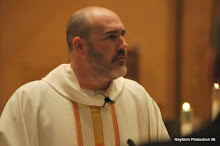Well, I just looked through the intro and it's mostly informational. The first part starts with God, moves through the Church and then ends with us.
After that, it's more instructional about how to read it, that is, until the very last statement. Holy Lord, brace yourselves:
"The whole concern of doctrine and its teaching must be directed to the love that never ends. Whether something is proposed for belief, for hope or for action, the love of our Lord must always be made accessible, so that anyone can see that all the works of perfect Christian virtue spring from love and have no other objective than to arrive at love."
Holy Lord that is powerful! What a blessing. Whatever we teach, we must make love accessible and help people see that all that is taught, all that is lived by HMC is about helping us all arrive at love.
It would seem that our first challenge, then, is to make sure love is the origin of what we do here and make sure that that love is defined not by 21st century American modernism, but by Christ.
Tuesday, June 2, 2009
Subscribe to:
Post Comments (Atom)

It is ironic that this quote that seems to be the embodiment of the post-Vatican II movement towards an emphasis on love over doctrine comes from the old Pre-Vatican II Roman Catechism.
ReplyDeleteBefore moving on to the next section I would also like to point out two great lines from the very first article:
“For this reason, at every time and in every place, God draws close to man. He calls man to seek him, to know him, to love him with all his strength.”
I love the irony and the beautiful silliness of these lines.
1) God draws near to us.
2) And then calls us, with all of our strength, to seek him.
We like to pretend that the human search for God is difficult, like an archeologist searching for long hidden truths in the sands of the desert…When in fact, what the Catechism presents is much more like a one-year old child being invited to play peak-a-boo with a parent who hides 10 inches from his face.
And then, the parent also teaches the child to remove the hands from the face to complete the game...it's side an amazing dicotomy: It seems so one sided, but both are required.
ReplyDeleteGod calls. God helps us hear the call. God gives us the strength to respond to the call.
And then, God allows us to call that "relationship"...all gift, all mystery.
What you guys are describing is what Chesterton is talking about in The Man Who Was Thursday. As the head of police and Sunday, God calls the detectives close to him, then charges them with seeking him out. Syme figures out at the end that Sunday has been like a father playing peek-a-boo with a child the whole time while the philosophical policemen were all busy trying to stop the world from falling apart.
ReplyDeleteI am not sure if this is really part of the intro or not... but after pondering that last paragraph about the centrality of love I looked at the picture of the fresco image of the Virgin Mary and Jesus. The explanation underneath says "Mary brought him into the world and gave him to all mankind. For this reason she is the purest image of the Church." For some reason this really struck me... I am not sure if I have ever heard it said that way before, or maybe I heard it differently because of the context of the preceding paragraphs. As a protestant I have always been mystified about the role of Mary in the Catholic church, but the "purest image of the Church" adds a new dimension I had not thought about before. Unfortunately, I think there are a lot of riches that my tradition has brushed aside over the years.... I am excited to see what all I have been missing.
ReplyDelete